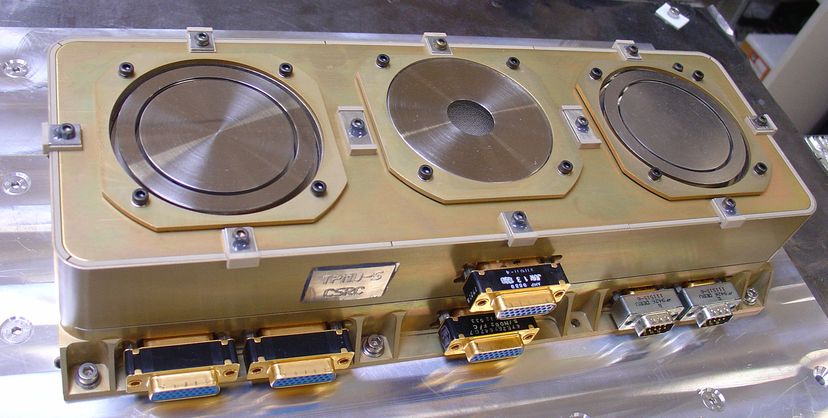Short description of the device
TPMU is placed in a box made of aluminium alloy containing the electronics block and block of measuring sensors with the retarding potential analyzer (RPA) and two RF sensors. The entire box is mounted on the upper side of the control unit DSLP that for TPMU provides both power and data processing. Ion measurement is based on the retarding potential analyzer and uses planar sensor, which contains a set of internal electrodes. The electrodes are gradually fed by increasing positive voltage, which controls flow of ions from the surrounding plasma. On collecting electrode is then given only ions with certain energies. The dependence of current on voltage gives data for calculation of the total ion concentration, temperature and approximate composition (it can distinguish ions of oxygen, hydrogen and helium). To obtain the electron temperature another type of the sensor and high frequency measurement method are used. Electrode of the sensor is fed with pulses of radio frequency signals around 50 kHz. Signal amplitude is regulated so that the output voltage is maintained at a constant level. The magnitude of this amplitude is determined as the value for electron temperature calculation. Maxwell distribution of velocities of the electrons is assumed. The same type of sensor is also used for determining the spacecraft floating potential. The theoretical range of densities and temperatures measured are approximately 10 to 1 million ions per cubic centimetre, respectively 800-10 000 K. The floating potential of the satellite is measured in the range of ± 12 volts. Data obtained from the device will be used to study processes in thermal plasma and after accumulation of sufficient data also for the construction and improvement of empirical models, especially the construction of a new global model at the height of the satellite orbital path.

